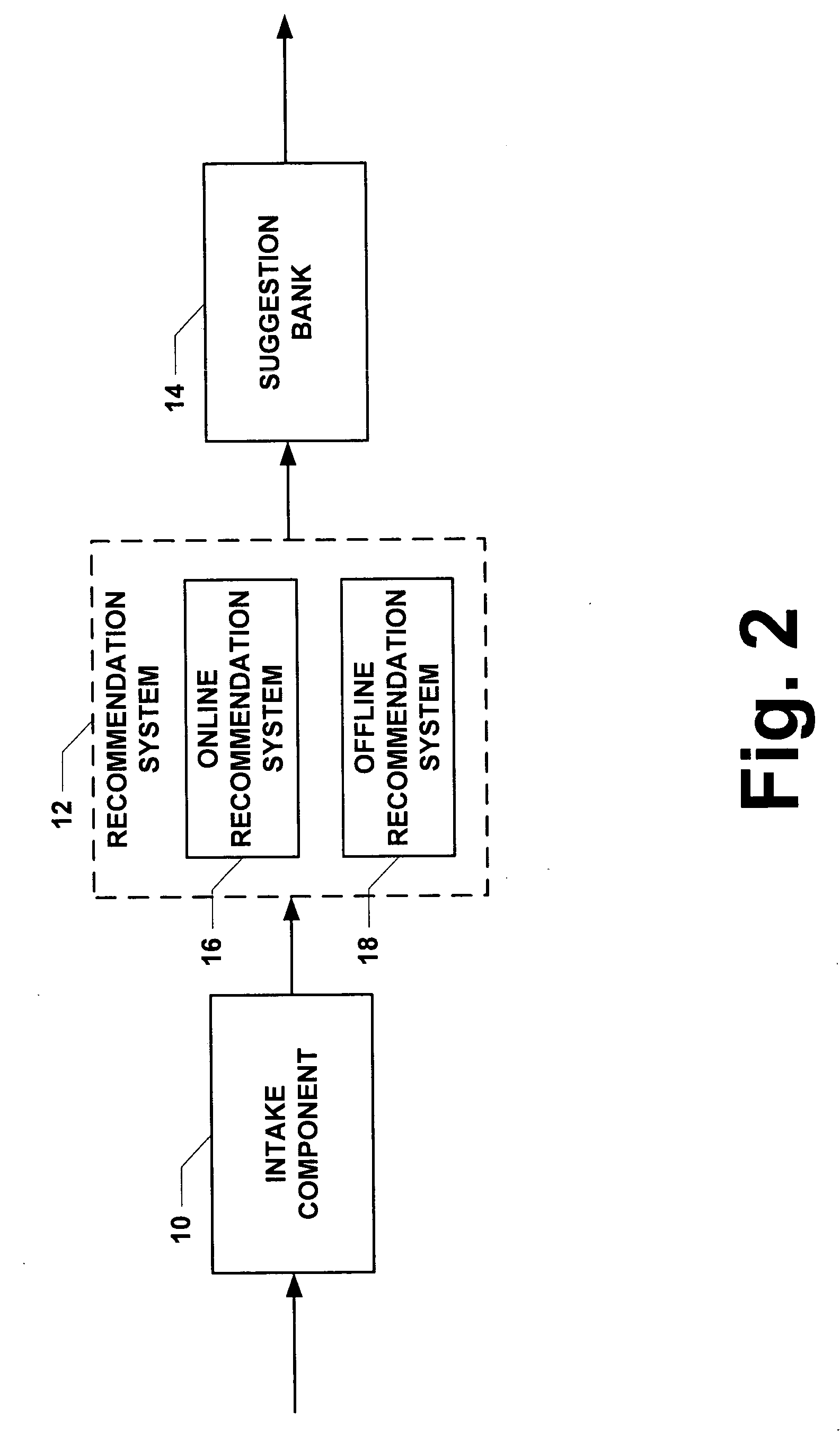Solution recommendation based on incomplete data sets
a technology of incomplete data and recommendation system, applied in the field of recommendation system, can solve the problems of high incompleteness, many case constraints have missing values, and workflow recommendation system
- Summary
- Abstract
- Description
- Claims
- Application Information
AI Technical Summary
Benefits of technology
Problems solved by technology
Method used
Image
Examples
Embodiment Construction
[0015] With reference to FIG. 1, a system is illustrated that provides suggestions to a user that includes an intake component 10, a recommendation system 12, and a solution bank 14. This system can discover (e.g., via data mining) hidden case clusters from incomplete data sets (e.g., case logs). The problem of data incompleteness can be addressed by utilizing one or more techniques such as latent semantic indexing (LSI) under the guide of a domain model for customer constraints (e.g., requirements). LSI can eliminate noise caused by constraint dependencies and transform original case logs into case logs with semantic constraints. In one example, each semantic constraint can represent a number of real constraints with hidden conceptual correlations.
[0016] The intake component 10 can receive one or more data sets from one or more sources. In one example, a source provides data acquired from a questionnaire or equivalent that queries a user to provide information related to one or mo...
PUM
 Login to View More
Login to View More Abstract
Description
Claims
Application Information
 Login to View More
Login to View More - R&D
- Intellectual Property
- Life Sciences
- Materials
- Tech Scout
- Unparalleled Data Quality
- Higher Quality Content
- 60% Fewer Hallucinations
Browse by: Latest US Patents, China's latest patents, Technical Efficacy Thesaurus, Application Domain, Technology Topic, Popular Technical Reports.
© 2025 PatSnap. All rights reserved.Legal|Privacy policy|Modern Slavery Act Transparency Statement|Sitemap|About US| Contact US: help@patsnap.com



